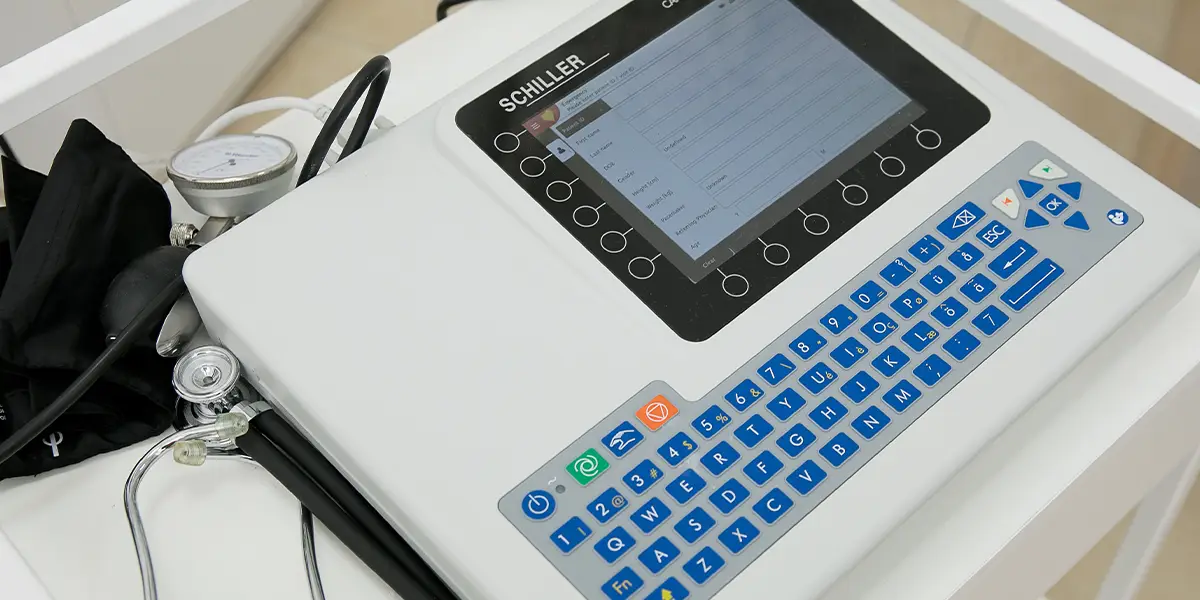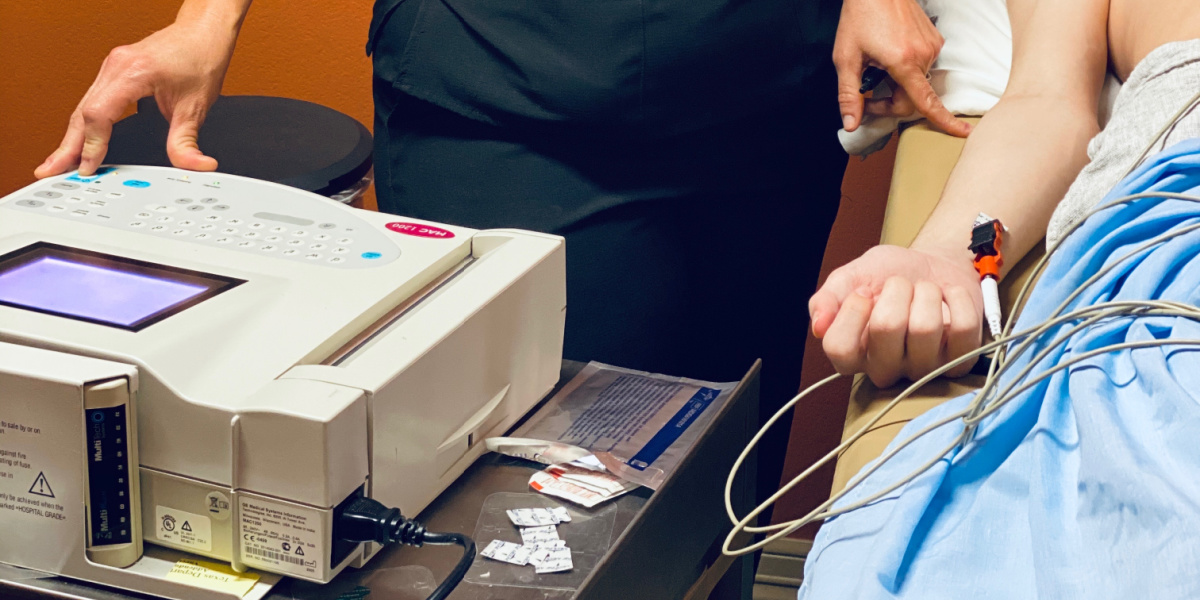In the realm of modern medicine, Electrocardiogram (EKG) machines stand as indispensable tools, providing healthcare professionals with invaluable insights into the heart’s electrical activity. These devices, also known as ECG machines, have revolutionized cardiac diagnostics and monitoring, playing a pivotal role in the assessment and management of cardiovascular health. In this article, we will delve into the world of EKG machines, exploring their history, functionality, applications, and the impact they have on patient care.
The Evolution of EKG Machines
The roots of EKG technology trace back to the late 19th century when the pioneering work of scientists like Augustus Waller and Willem Einthoven laid the foundation for electrocardiography. In 1903, Einthoven, a Dutch physiologist, introduced the string galvanometer, a crucial innovation that allowed for the first practical recording of the electrical activity of the heart.
Over the ensuing decades, advancements in electronics and technology transformed EKG machines from complex and bulky devices to the compact, user-friendly instruments we know today. The principles introduced by Einthoven laid the groundwork for the standardized 12-lead EKG, a configuration that has become the gold standard in cardiac diagnostics.
Functionality of EKG Machines
At its core, an EKG machine captures the electrical impulses generated by the heart during each cardiac cycle. These impulses, also known as action potentials, trigger the contraction of the heart muscle, leading to the rhythmic pumping of blood. The EKG records these electrical signals in the form of a graphical representation known as an electrocardiogram.
The basic components of an EKG machine include:
- Electrodes: Small, adhesive sensors placed on specific areas of the skin to detect and transmit electrical signals from the heart.
- Wires and Cables: Conduits that connect the electrodes to the EKG machine, facilitating the transmission of electrical data.
- Amplifiers: Devices within the EKG machine that enhance the strength of the electrical signals, making them more discernible and accurate.
- Display Unit: A screen or paper printout that visually represents the heart’s electrical activity in the form of waveforms.
The EKG recording typically consists of multiple waveforms, each corresponding to a specific phase of the cardiac cycle. The prominent waves include the P-wave, QRS complex, and T-wave, each reflecting the depolarization and repolarization of different parts of the heart.
Applications of EKG Machines
- Diagnosis of Cardiac Conditions: EKG machines are fundamental in diagnosing various cardiac conditions, including arrhythmias, heart attacks, and conduction abnormalities. The distinctive patterns and abnormalities observed in the electrocardiogram aid healthcare professionals in identifying specific cardiac disorders.
- Monitoring Cardiac Health: EKG machines are widely used for continuous monitoring of patients in critical care settings, such as intensive care units (ICUs) and cardiac wards. This real-time monitoring helps detect changes in the heart’s electrical activity promptly.
- Preoperative and Postoperative Assessment: Prior to surgical procedures, EKGs provide a baseline assessment of a patient’s cardiac health. Postoperatively, continuous EKG monitoring can detect any arrhythmias or abnormalities that may arise during recovery.
- Exercise Stress Testing: EKG machines are integral to exercise stress testing, where the heart’s response to physical exertion is evaluated. This test is valuable for assessing cardiovascular fitness, diagnosing coronary artery disease, and determining appropriate exercise regimens.
- Ambulatory EKG Monitoring: Holter monitors, a type of ambulatory EKG, allow for continuous recording of the heart’s electrical activity over an extended period, typically 24 to 48 hours. This type of monitoring is beneficial for capturing intermittent arrhythmias that may not be evident in a standard EKG.

Technological Advancements in EKG Machines
The evolution of EKG technology has seen significant advancements that enhance diagnostic accuracy, streamline workflows, and improve patient outcomes. Some notable technological innovations include:
- Digital EKG Machines: The transition from analog to digital EKG machines has facilitated more efficient data storage, retrieval, and analysis. Digital EKGs offer superior signal quality, enabling healthcare professionals to make more accurate diagnoses.
- Wireless Connectivity: Many modern EKG machines come equipped with wireless capabilities, allowing seamless integration with electronic health record (EHR) systems. This enhances communication between healthcare providers, promotes efficient data sharing, and contributes to comprehensive patient care.
- Portable and Handheld EKG Devices: The development of portable and handheld EKG devices has expanded the accessibility of cardiac monitoring. These devices are particularly useful for point-of-care diagnostics and remote patient monitoring.
- Artificial Intelligence (AI) Integration: AI algorithms are being integrated into EKG analysis to assist healthcare professionals in interpreting complex data. AI can help identify subtle patterns, predict cardiac events, and provide decision support, enhancing the efficiency of cardiac diagnostics.
Challenges and Considerations
While EKG machines are invaluable tools in cardiac diagnostics, certain challenges and considerations merit attention:
- Interpretation Expertise: Interpreting EKG data requires specialized knowledge and training. Ensuring that healthcare professionals, including physicians, nurses, and technicians, are adequately trained in EKG interpretation is crucial for accurate diagnoses.
- False Positives and Negatives: EKGs may produce false positives or negatives, especially in cases of intermittent arrhythmias or subtle changes in the cardiac cycle. Clinical judgment, patient history, and additional diagnostic tests may be necessary for comprehensive assessments.
- Standardization of Interpretation: Ensuring standardization in EKG interpretation is essential for consistency in diagnoses. Efforts to establish and adhere to standardized criteria contribute to the reliability of EKG findings across healthcare settings.
- Patient Factors: Patient factors, such as age, gender, medications, and underlying medical conditions, can influence EKG results. Healthcare professionals must consider these factors when interpreting EKG data to avoid misinterpretations.
Conclusion
EKG machines have emerged as indispensable tools in the field of cardiology, offering a window into the intricacies of the heart’s electrical activity. From their historical origins to the cutting-edge technology of today, EKG machines have continually evolved, reshaping the landscape of cardiac diagnostics and patient care. As technology continues to advance, the role of EKG machines in early detection, monitoring, and management of cardiac conditions is poised to expand, reaffirming their status as cornerstone devices in the pursuit of cardiovascular health. The journey from the string galvanometer to today’s digital, wireless, and AI-integrated EKG machines represents not only a technological triumph but also a testament to the ongoing commitment to advancing medical science for the betterment of patient outcomes.
Tags: EKG Machines
